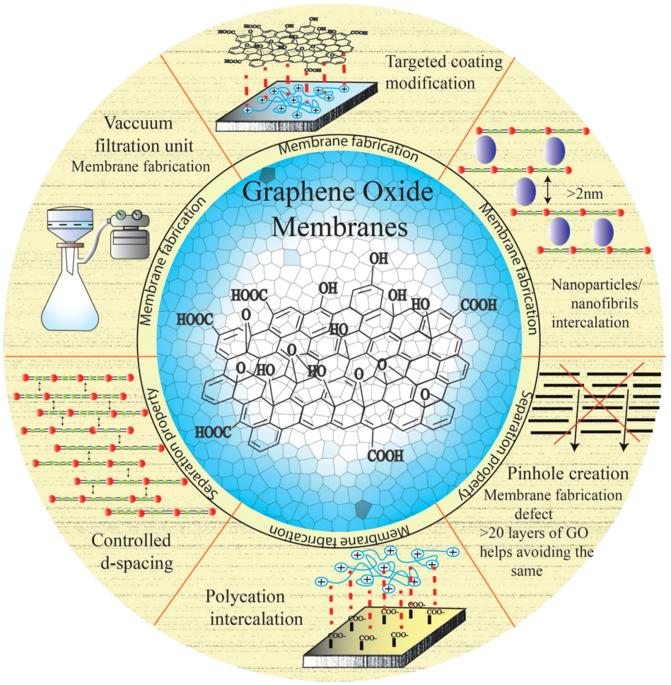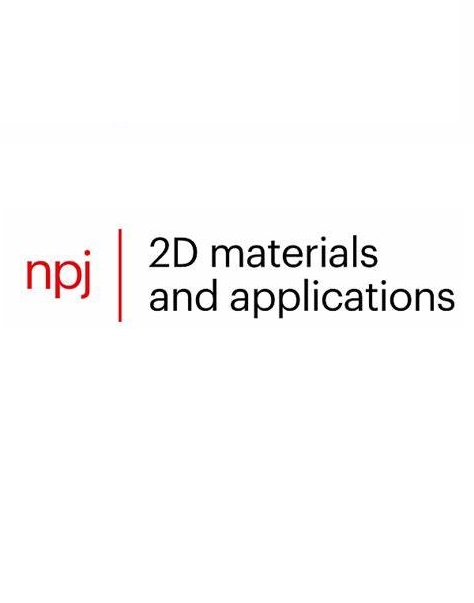Graphene oxide-based membranes for water desalination and purification
IF 8.8
2区 材料科学
Q1 MATERIALS SCIENCE, MULTIDISCIPLINARY
引用次数: 0
Abstract
Millions of people across the globe are severely afflicted because of water potability issues, and to proffer a solution to this crisis, efficient and cost-effective desalination techniques are necessitated. Membranes, in particular Graphene-derived membranes, have emerged as a potential answer to this grave problem because of their tunable ionic and molecular sieving capability, thin structure, and customizable microstructure. Among graphene-derived membranes, Graphene Oxide membranes have been the most promising, given the replete presence of oxygen-containing functional groups on its surface. However, the prospects of commercial applicability of these membranes are currently plagued by uneven stacking, crossflow delamination, flawed pores, screening and pH effects, and horizontal defects in the membrane. In addition, due to the selectivity–permeability trade-off that commonly exists in all membranes, the separation efficiency is negatively influenced. This review, while studying these challenges, aims to outline the most recent ground-breaking developments in graphene-based membrane technology, encompassing their separation mechanism, selectivity, adjustable mechanical characteristics, and uses. Additionally, we have covered in detail how several process variables such as temperature, total oxygen concentration, and functional groups affect the effectiveness of membrane separation with the focal point tilted toward studying the currently used intercalation techniques and effective nanomaterial graphene oxide membranes for water desalination

基于氧化石墨烯的脱盐和净水膜
全球数以百万计的人因饮水问题而深受其害,要解决这一危机,就必须采用高效、经济的海水淡化技术。膜,尤其是石墨烯衍生膜,因其可调的离子和分子筛分能力、薄结构和可定制的微结构,已成为解决这一严重问题的潜在方法。在石墨烯衍生膜中,氧化石墨烯膜是最有前途的,因为其表面含有完整的含氧官能团。然而,这些膜的商业应用前景目前受到堆叠不均匀、横流分层、孔隙缺陷、筛选和 pH 值效应以及膜的水平缺陷等问题的困扰。此外,由于所有膜通常都存在选择性-渗透性权衡,分离效率也会受到负面影响。本综述在研究这些挑战的同时,旨在概述石墨烯基膜技术的最新突破性发展,包括其分离机制、选择性、可调机械特性和用途。此外,我们还详细介绍了温度、总氧浓度和官能团等几个过程变量如何影响膜分离的效果,重点研究了目前使用的插层技术和用于海水淡化的有效纳米材料氧化石墨烯膜。
本文章由计算机程序翻译,如有差异,请以英文原文为准。
求助全文
约1分钟内获得全文
求助全文
来源期刊

npj 2D Materials and Applications
Engineering-Mechanics of Materials
CiteScore
14.50
自引率
2.10%
发文量
80
审稿时长
15 weeks
期刊介绍:
npj 2D Materials and Applications publishes papers on the fundamental behavior, synthesis, properties and applications of existing and emerging 2D materials. By selecting papers with the potential for impact, the journal aims to facilitate the transfer of the research of 2D materials into wide-ranging applications.
 求助内容:
求助内容: 应助结果提醒方式:
应助结果提醒方式:


